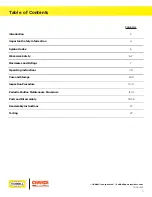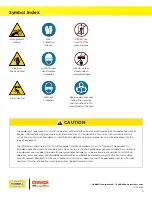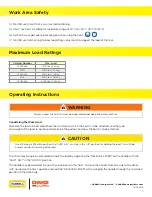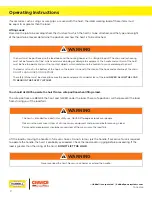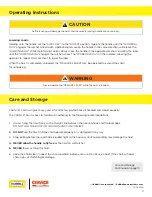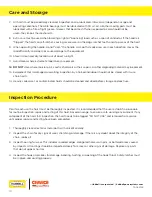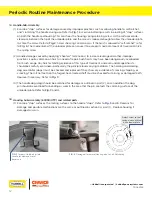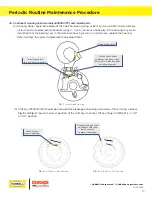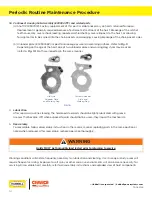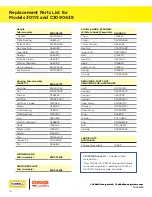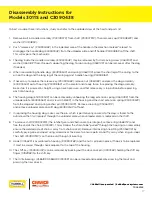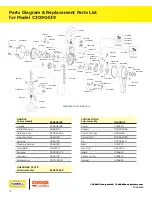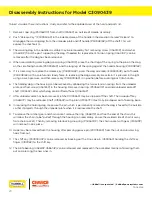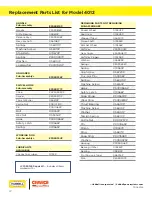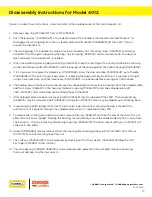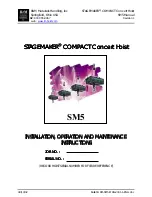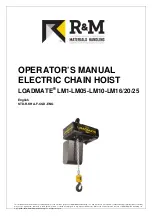
8
©Hubbell Incorporated | hubbellpowersystems.com
TD09232E
Operating Instructions
If accessories, such as slings or wire grips, are used with the hoist, the rated working load of these items must
be equal to or greater than the load.
Lifting Loads:
Based on the job to be accomplished, the structure to which the hoist is to be attached, and the type and weight
of the load to be moved, determine the position and how the hoist is to be attached.
WARNING
!
The hoist must be positioned so the load hook and the housing hook are in a straight-line pull. The chain and/or housing
must not be forced out of line, which could cause binding or damage to equipment. The handle and controls of the hoist
must be free to operate and must not contact objects which could cause the controls to move or damage the hoist.
The load must seat in the bottom of the hook, so the load is in line with the shank of the hook and centerline of the chain.
DO NOT LOAD HOOKS ON THE POINT.
The safety latches must be closed to secure the hook and prevent accidental loss of the load.
NEVER ALLOW THE LOAD
TO BEAR ON THE SAFETY LATCHES
.
You should ALWAYS operate the hoist from a safe position when lifting a load.
The safe positions are BESIDE the hoist and NEVER under the load. These safe positions will help prevent the load
from striking you if the load falls.
WARNING
!
The hoist is intended for industrial or utility use. NEVER lift people or loads over people.
Make sure the work area is clear of all unnecessary equipment and personnel before moving a load.
Personnel and equipment should be moved clear of the area in case the load falls.
Lift the load by moving the handle in full, even strokes. Do not slam or jerk the handle. If excessive force is required
to operate the handle, the hoist is probably overloaded. Check the load and/or rigging before proceeding. If the
load is greater than the rating of the hoist,
DO NOT LIFT THE LOAD
.
Never overload the hoist. Never use a cheater or extend the handle.
WARNING
!



